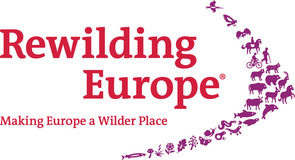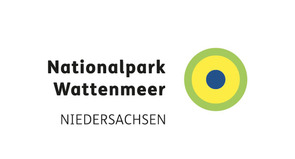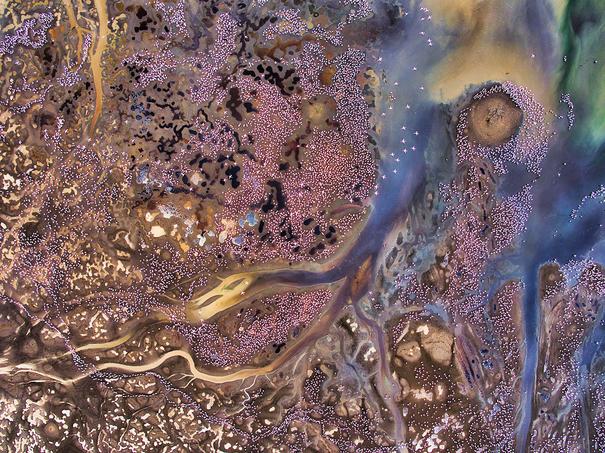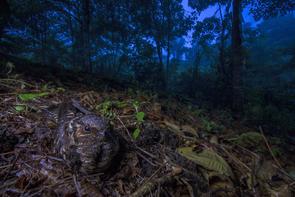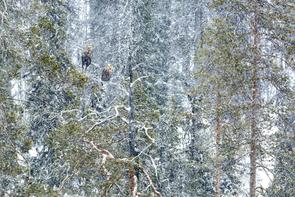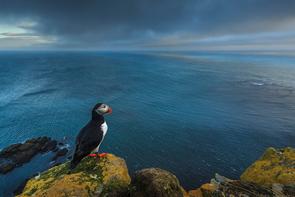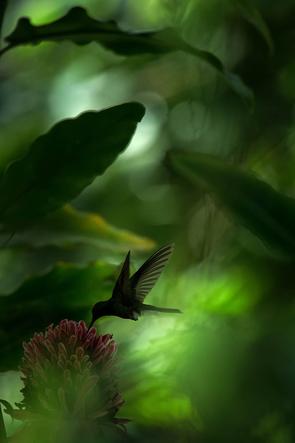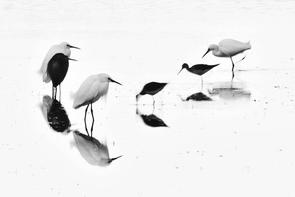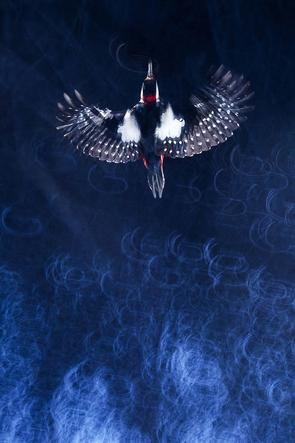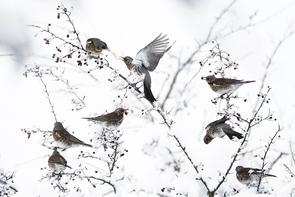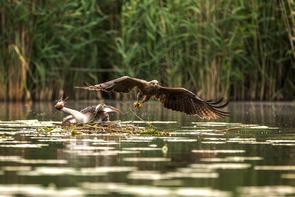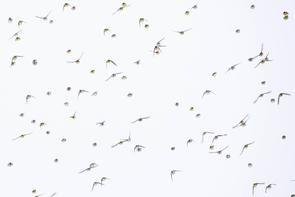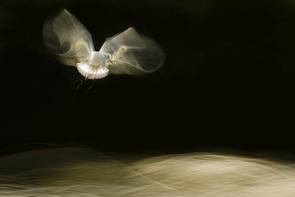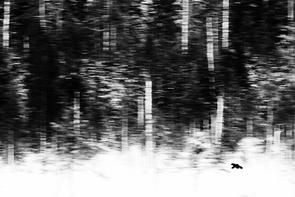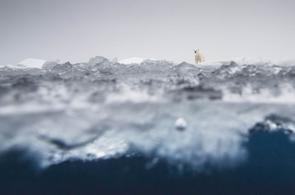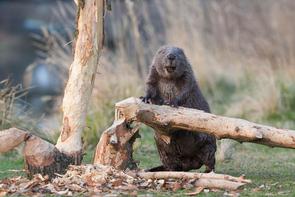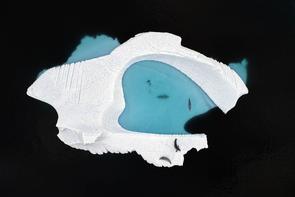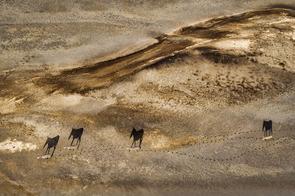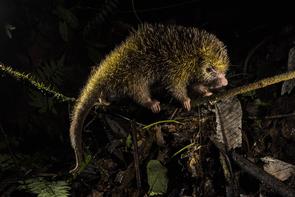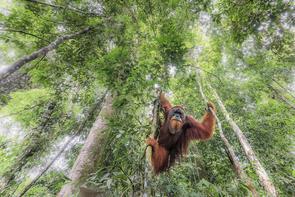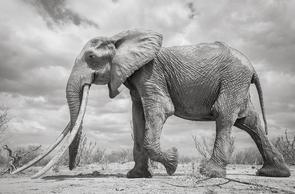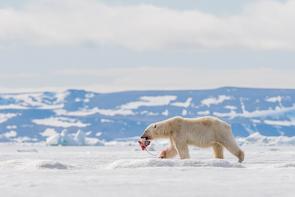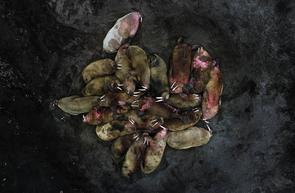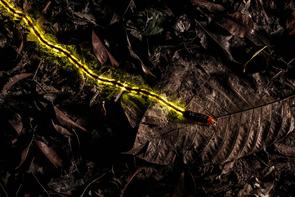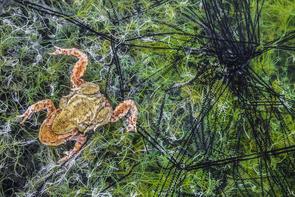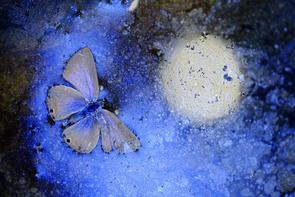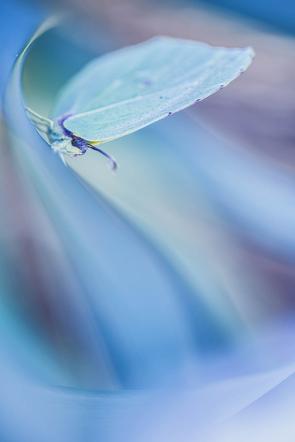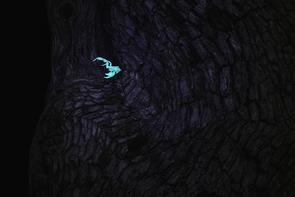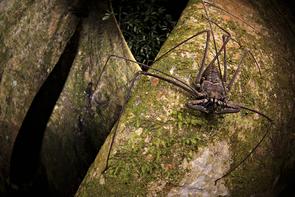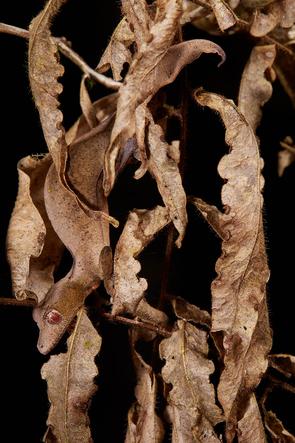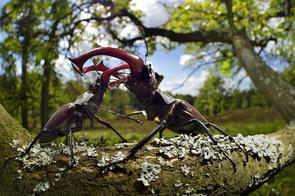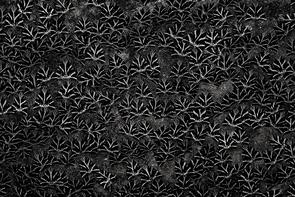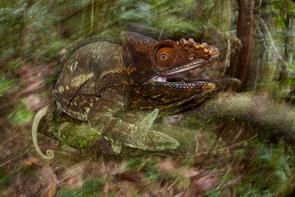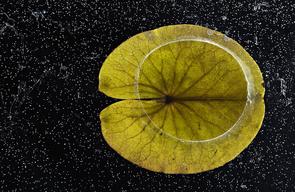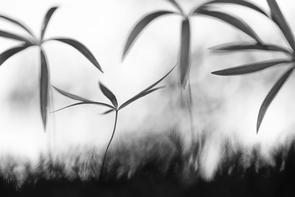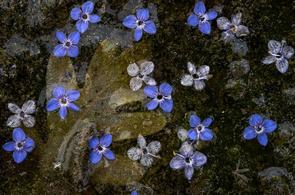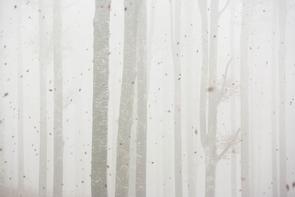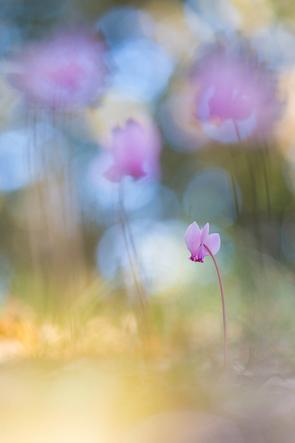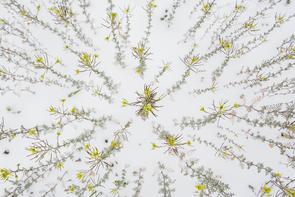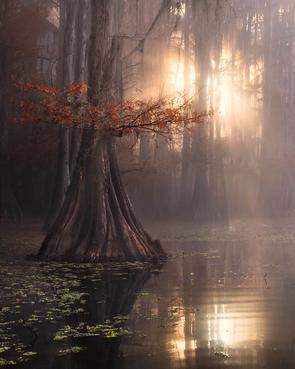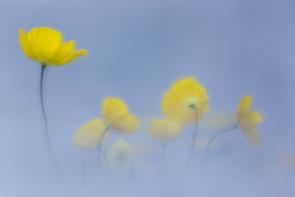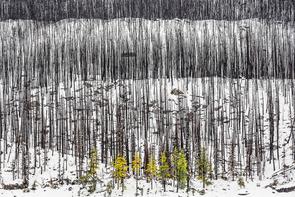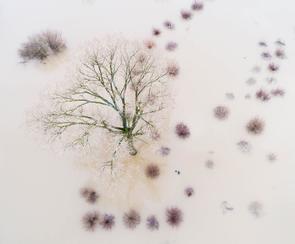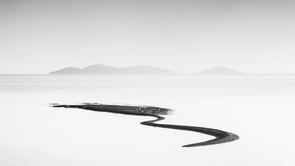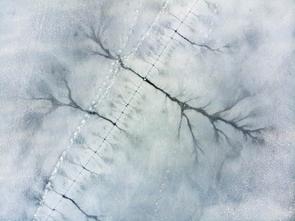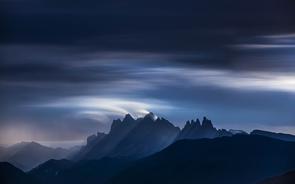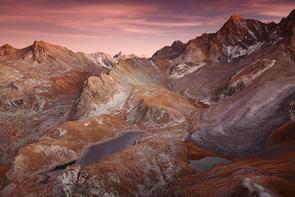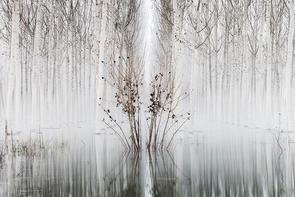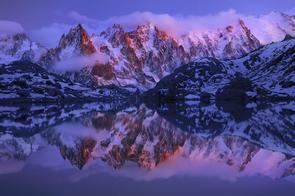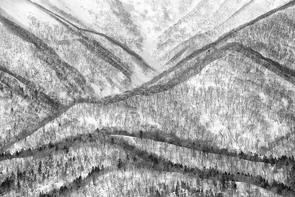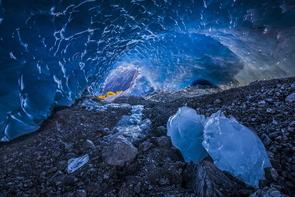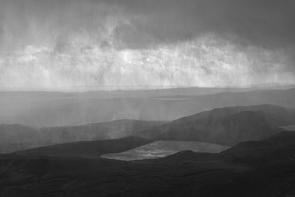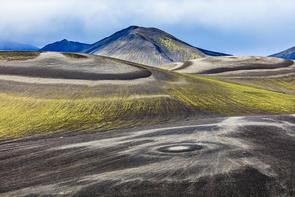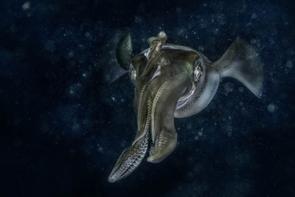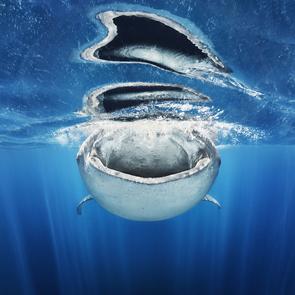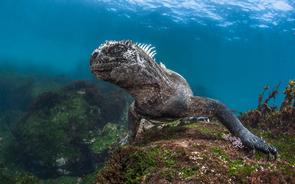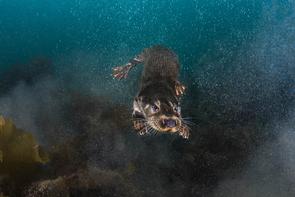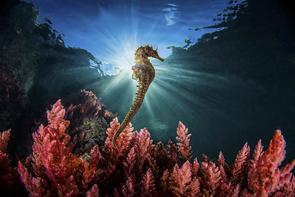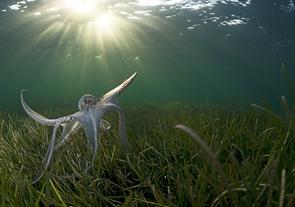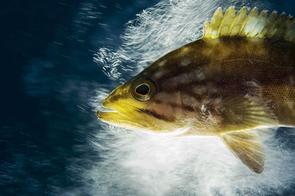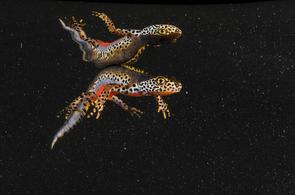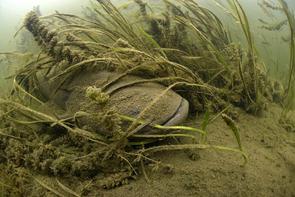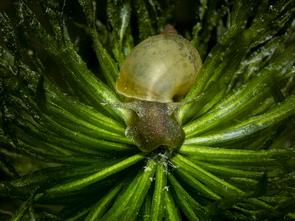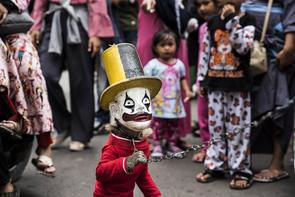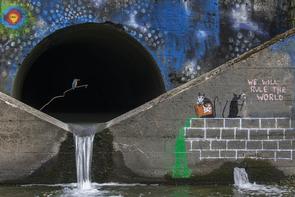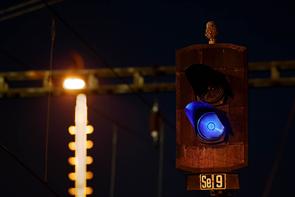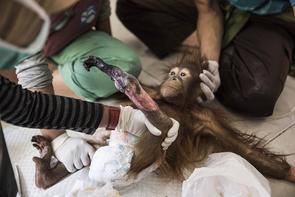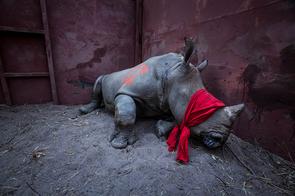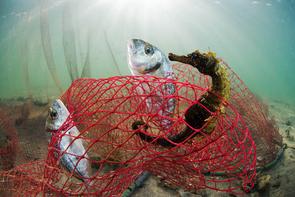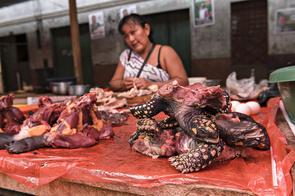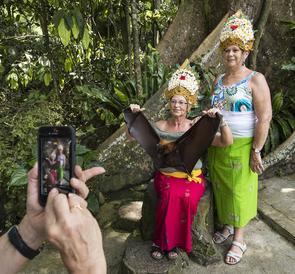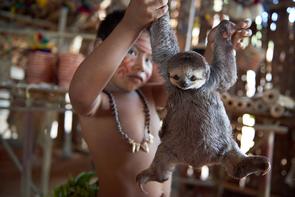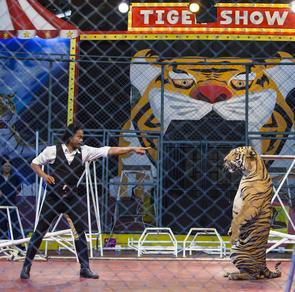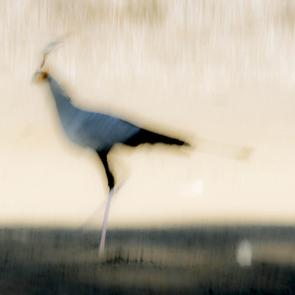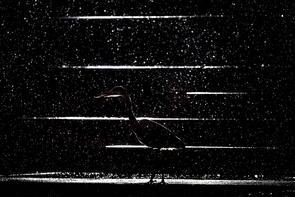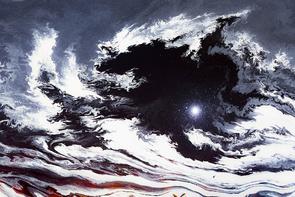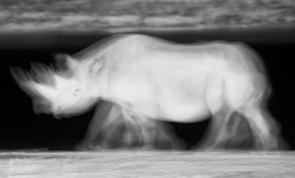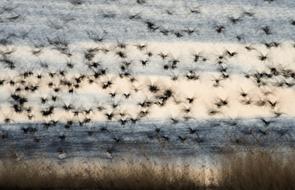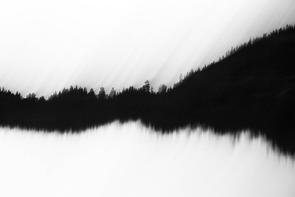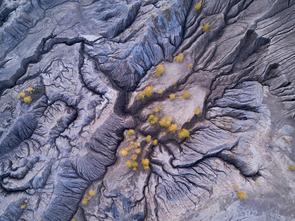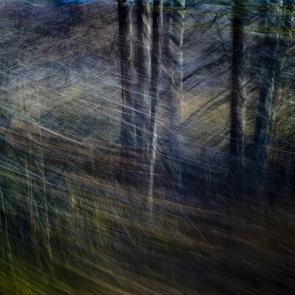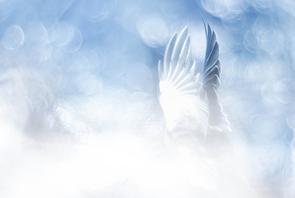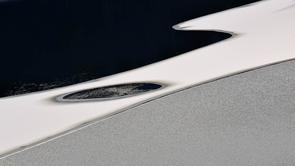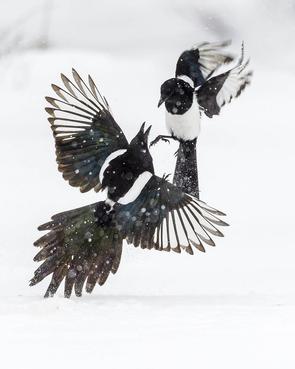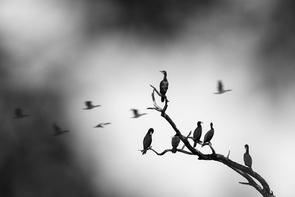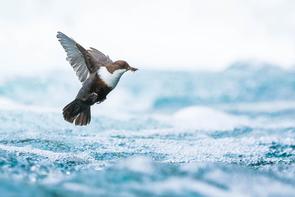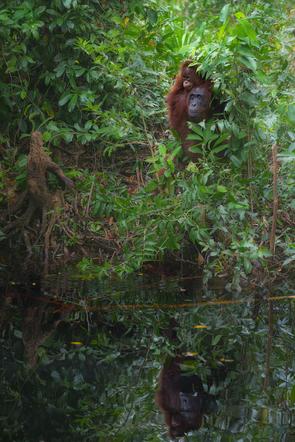Overall Winner: Cristobal Serrano (Spain)
I flew my drone high above the huge flocks of lesser flamingos (Phoeniconaias minor) at the muddy banks of Lake Bogoria (Kenya), where they find their favourite food, cyanobacteria of the spirulina genus, in the alkaline water of the lake. Because of the dry season, minerals and salts from the volcanic subsoil are highly concentrated, creating an explosion of rich colours that is visible from the air. The pink colour of the flamingos perfectly complemented the colour range of the great artist Mother Earth.
DJI Inspire 2 + Zenmuse X5s, Olympus M. Zuiko Digital ED 2.0/12mm(24mm), ISO 100
Cristobal Serrano was born on 8 April 1969 in Alicante (Spain). He graduated in optometry from the university of his hometown, and then studied management at the IESE Business School. When he was twenty, his interest for nature and the environment developed, while at the same time a passion for artistic expression began to take hold. This finally led him to take up nature photography, which to this day plays an important role in his life.
His photographic work is defined by a very personal conceptual vision. His subjects range from the wildest and most merciless moments that nature has to offer to the softest and emotionally most touching situations. The fact that nature is in a continuous process of creating, developing and refining, which spawns unsuspected beauty, provides an ongoing photographic challenge for him in meeting his own requirements of graceful compositions and finest aesthetics. It is no surprise that his images have been awarded in the world's most renowned competitions.
His projects all follow this thought: “The art of creation is the art of nature”.
www.cristobalserrano.com
Introductory note to the Competition European Wildlife Photographer of the year 2018
from Prof. Dr. Beate Jessel
In the 18th year of the competition European Wildlife Photographer of the Year, the 18 000 entered photographs demonstrate once more the beauty and diversity of nature – and also the significance of the competition among amateur and professional photographers alike. The photographs by 1 112 participants take us on a fascinating journey to natural spaces and ecosystems, inviting us to discover uncommon, often exceptional perspectives. This multitude of unique photos of exceptional quality, full of energy and power, aesthetics and grace illustrates nature's abundance and diversity. However, not all of them focus on beauty alone. Some shake us awake and show us where nature has its limits, and where it has been stretched to its limits by us humans. Many of the photographers spent hour after hour to take one photo, getting deeply involved with their environment to capture this one moment.
Especially the photo by this year's overall winner Cristobal Serrano depicts a sight that enthrals the viewer with its splendour of colour. This aerial shot shows two lesser flamingos at Lake Bogoria standing in the water coloured by high concentrations of mineral salts. What the image does not give away at first sight is this: in their diet lesser flamingos depend on a type of cyanobacteria typically found in highly alkaline salt lakes, and due to availability and composition of this basic food source, the species is very sensitive to changes in the ecosystem. The population is currently still estimated at up to 2.5 million individuals in East Africa, but the lesser flamingo has already made it onto the Red List of Threatened Species as potentially endangered: there are fears that reduced quality of its habitats and general disturbances will have a negative effect on the development of the population. This makes the lesser flamingo representative of a range of species that face the challenges of changing environmental conditions and the need to adapt. Stopping the decline of species and preserving biodiversity is one of our greatest tasks today for the future of our planet; it is the main objective for the Federal Agency for Nature Conservation, not only for nature's sake, but also as the foundation of human life.
Thus, all the photographs have one thing in common: they show us the value of what we should fight for – the protection of the environment to grant future generations the chance to experience nature and also to profit from nature's many services. I would like to invite you to get inspired and motivated by these photographs to venture outside and discover the peculiarities and unique characteristics of nature, to learn its value and take part in its protection – not only on distant continents but right on your own doorstep.
Sources: Kaggwa, M.N., Gruber, M., Oduor, S.O. et al. Hydrobiologia (2013) 710: 83.
https://doi.org/10.1007/s10750-012-1105-1
http://www.iucnredlist.org/details/22697369/0 (16.07.2018)
Prof. Dr. Beate Jessel
President of the Federal Agency for Nature Conservation
Jury's comment
from Sophie StaffordWhat makes a perfect photograph? Is it technical excellence, aesthetic vision or something more ephemeral? Perhaps there is no such thing as perfection, with every judgment predicated on the delicate and subjective relationship between the viewer and the image.
Judging a photographic competition isn’t a science. If the decisive factor were merely technical flawlessness, contests would be judged by computers, not juries. It’s much more than that. Judging is about art and, as such, it is emotional and subjective.
So when you bring together a jury of such diverse tastes as for this year’s European Wildlife Photographer of the Year competition, you know that different views will be voiced. It’s all part of a creative and joyously interactive judging process that you cannot get when studying images in solitude.
My fellow jurors were the immensely talented photographers Britta Jaschinski, Sandra Bartocha, Klaus Nigge and Roy Mangersnes, with myself the solo photography editor. And however great the differences between our personal photographic preferences, we remained united by our commitment to championing the creative and innovative views of nature that have become the signature of this exciting competition. As the judging began, we shared an eager anticipation of the visual delights to come.
With an increasing number of people taking up a camera to express their view of the world, it is perhaps not surprising that leading competitions are receiving more and more entries every year. As a result, judges find the selection process increasingly challenging.
As thousands upon thousands of images flash up, we start to take key ingredients – good exposure, pleasant composition, perfect sharpness – for granted. We find it hard to get excited about respectable photos that lack a certain something. What we need is an image to leap out from the crowd and slap us in the face. What we crave is originality, something we haven’t seen before.
It remains a disappointing truth that the majority of images entered in competitions show a minority of subjects. When photographing these flagship species and iconic landscapes, there are fewer opportunities to surprise a jury. That’s not to say that you cannot come up with a fresh view, but it can be harder to stand out from the crowd.
That’s why images of common or local species often have as good – if not a greater – chance of winning. They are a breath of fresh air, a change from the usual gallery of subjects, and offer more opportunities to capture something new. So next time you reach for your camera, ask yourself if there’s something close to home that you could dedicate yourself to photographing creatively.
Today’s digital world is awash with imagery. Increasingly, photos are created and processed with a view to capturing the attention – but hold it for no longer than the blink of an eye. Their fleeting beauty lacks the depth or complexity to demand deeper consideration. Our jury’s preference proved to be for images with more meaning, photos that required more time and careful contemplation to appreciate the purpose behind their artistic expression. We appreciated images that strived to reveal something new, create a connection, or inspire an appreciation of the fragility of our natural world.
Ethical considerations featured prominently in our discussions. The trend towards creating photos without consideration for the welfare of the subject – be it plant or animal – is worrying. And as the ‘selfie culture’ continues to claim wildlife casualties around the globe, we felt keenly our responsibility as judges to champion the highest ethical standards.
Fortunately, in a competition of this calibre of the European Wildlife Photographer of the Year competition, there are always plenty of images that are beautiful, important, creative, moving, innovative and surprising – and this year’s entries did not disappoint. From the intimate serenity of a nightjar’s nest and the dreamlike depiction of a secretary bird to an urban kingfisher and a pile of sleeping walruses, the jury found plenty that stopped us in our tracks.
None more so than our overall winner – Cristobal Serrano’s Rainbow City. In this spectacular image, nature becomes art, the ground a painter’s palette daubed with an explosion of colour. The aerial perspective reduces the breathtaking landscape to a graphic symphony of perfectly composed lines, shapes and forms. It’s a celebration of the beauty of nature; a celebration of life itself.
Though this kaleidoscopic image has instant impact, it also has staying power, continually drawing and rewarding the eye. With each passing moment, you discover something new, as all the subtle elements that make this image so successful reveal themselves. It soothes the soul and excites the imagination.
Now the jury’s work is done. It’s your turn to be the judges. As you scrutinise the winning images, I’m sure you will be amazed by some and confused by others. Most of all, you will disagree about which photos are the best. But that’s precisely what makes judging a competition so much fun!
On behalf of the jury
Sophie Stafford
We´d like to thank our sponsors:







